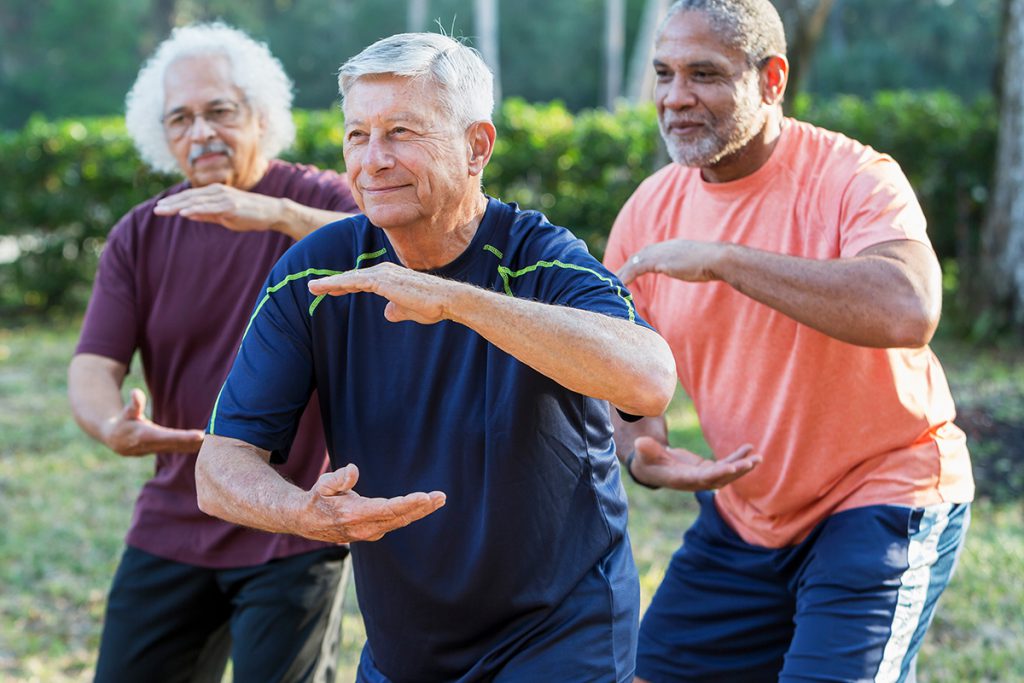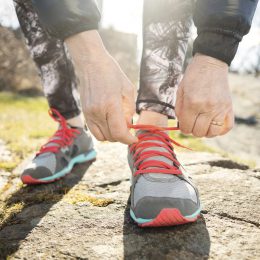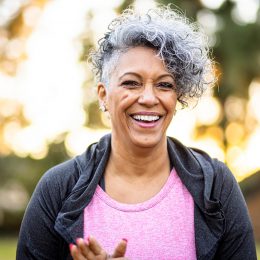5 Ways to Manage Chronic Pain Without Opioids
Opioids still have their place for some pain management, but it’s important to know about alternatives.

It’s no secret there’s a serious problem with opioids in this country.
In 2019, these high-powered pain medications were involved in nearly 50,000 overdose deaths, which is about six times the number of opioid-involved overdoses in 1999, according to the Centers for Disease Control and Prevention (CDC). And it’s not just a young person’s problem. Between 2013 and 2015, the number of people 55 years and older seeking treatment for opioid use disorder increased nearly 54 percent.
That said, there are times when opioids are the best option for relief. “They work very well when it comes to short-term, severe pain like you have in many post-surgical situations,” says Medhat Mikhael, M.D., a pain management specialist at MemorialCare Orange Coast Medical Center in Fountain Valley, California. If you’ve had surgery or an accident that required hospitalization, chances are that an over-the-counter (OTC) pain reliever isn’t going to cut it the first few days of your recovery.
But opioids are also sometimes prescribed for people with chronic pain disorders, characterized as pain lasting longer than three months. That’s when treatment decisions can get murky, Dr. Mikhael says. It only takes a couple of weeks to become physically dependent on them.
“If you’re looking for what to use in a chronic situation, you need to keep addiction risk in mind,” he says.
Most experts agree that opioids should not be the first or even second treatment option in many cases of chronic pain. The best way to avoid unnecessary opioid use—and reduce risk of dependence—is to be proactive about trying other, less risky pain management techniques first. Here are five opioid alternatives to consider.
Opioid Alternative #1: OTC Pain Meds
While it may seem like pain relievers you’d find at the drugstore won’t be powerful enough, that’s not always true, Dr. Mikhael says.
For many conditions, such as mild arthritis or pain that comes and goes, people can often find relief with OTC painkillers like acetaminophen (Tylenol), aspirin (Bayer), ibuprofen (Advil or Motrin), and naproxen (Aleve). When used as directed, this can be a first line of defense against pain.
Even though you don’t need a prescription, it’s still important to check with your doctor or pharmacist before taking any OTC medications. Many drugs are metabolized differently in seniors—meaning your body might process it more slowly or quickly than it did when you were younger—which could lead to side effects if you don’t adjust the dosage for your age.
Plus, older people are often already taking one or more medications for a chronic condition. Adding an OTC med to the mix without getting an expert’s okay could cause you to have a dangerous interaction. To learn more, check out our guide to four types of OTC meds that may cause serious side effects.
Opioid Alternative #2: Acupuncture
Dr. Mikhael says many of his patients use acupuncture as an alternative therapy instead of opioids, and numerous studies back up its potential for pain relief. For example, a research review in the Journal of Pain found acupuncture was effective for various chronic pain conditions, including osteoarthritis, chronic headache, and shoulder pain. Most people in the studies had acupuncture once per week for an average of eight weeks, but some participants reported pain relief within a few sessions.
Not ready to commit to regular acupuncture appointments? Another research analysis found just one session offered pain relief for many study participants—most within 30 minutes.
Just be aware that acupuncture may not be covered by insurance. For example, Medicare Part B covers it only for chronic low back pain. Check with your health plan about coverage or discounts prior to making an appointment.
Opioid Alternative #3: Yoga and Tai Chi
When it comes to specific areas for pain, the lower back is particularly common. In fact, the World Health Organization estimates up to 70 percent of people will experience low back pain at some point in their lives.
Although pain meds are often used to get relief, it turns out movement-based interventions like yoga and tai chi may also help, according to a Holistic Nursing Practice review of more than 30 studies. The combination of gentle exercise, focused relaxation, and deep breathing in these mind-body workouts can help loosen tight muscles and reduce stress.
“In our research review, movement-based mind-body interventions were found to reduce pain intensity and improve physical function and emotional symptoms, such as depression and anxiety,” says Juyoung Park, Ph.D., a coauthor of the Holistic Nursing Practice review and an associate professor of social work at Florida Atlantic University. “It’s important for those who suffer from chronic back pain to consider mind-body interventions as treatment options, or in addition to medication.”
You can try an easy yoga flow for older adults or tai chi movements on your own at home. Want to feel like you’re in the studio with friends? Sign up for an online class, like SilverSneakers Yoga or SilverSneakers EnerChi.
Opioid Alternative #4: Deep Breathing
Although chronic pain may come as a result of injury or aging, stress can play a major role in how much the pain affects you. A study in the Malaysian Journal of Medical Sciences found stress can lower pain tolerance and make it harder to regulate—which in turn makes you feel even more anxious and stressed. Sound familiar?
Subscribe to our newsletter
It's quick and easy. You could be one of the 13 million people who are eligible.
Already a member? Click to discover our 15,000+ participating locations.
Follow Us
Part of the reason yoga and tai chi are helpful is the emphasis on breathing, Park says. But you can also practice breathing exercises on your own to reap the benefits. Deep, mindful breathing when you’re sitting or lying down comfortably can help activate the parasympathetic nervous system, which is responsible for your body’s rest-and-digest response. It works to decrease heart rate and slow respiration.
Try this simple technique: Sit comfortably, and inhale through your nose for a count of three. Exhale through your mouth for a count of five. Repeat for five rounds. The basic idea is to make your exhale longer than your inhale.
Learn more about the stress-busting power of mindful, deep breathing here.
Opioid Alternative #5: Explore Options with Your Doc
As with all chronic conditions, be sure to talk with your doctor about other options that might work for you. That’s especially true if you’re already using opioids and you want to taper off gradually, Dr. Mikhael says.
There may be other medications that can work just as well, or you may be a candidate for a minimally invasive procedure that can reduce or eliminate your pain response, he says. For example, there’s nerve ablation, which involves safely removing or destroying a small portion of nerve tissue. This can cause an interruption in pain signals until the nerves begin to grow back—some patients get up to one year of relief.
Dr. Mikhael recommends talking to your primary care doctor as well as a specialist to understand your range of options. While it’s true opioids are still a helpful treatment in some circumstances—like when you’re newly recovering from surgery or have unrelenting chronic pain that other treatments haven’t helped—they’re not your only choice when it comes to pain management.
To learn more, check out our guide to what every older adult needs to know about opioid safety.
Take Your Favorite SilverSneakers Classes Online!
SilverSneakers members can access live fitness classes and wellness workshops through SilverSneakers LIVE. See the latest schedule and RSVP for classes here.
Not a member? If you have a Medicare Plan, it may include SilverSneakers—at no additional cost. Check your eligibility instantly here.





